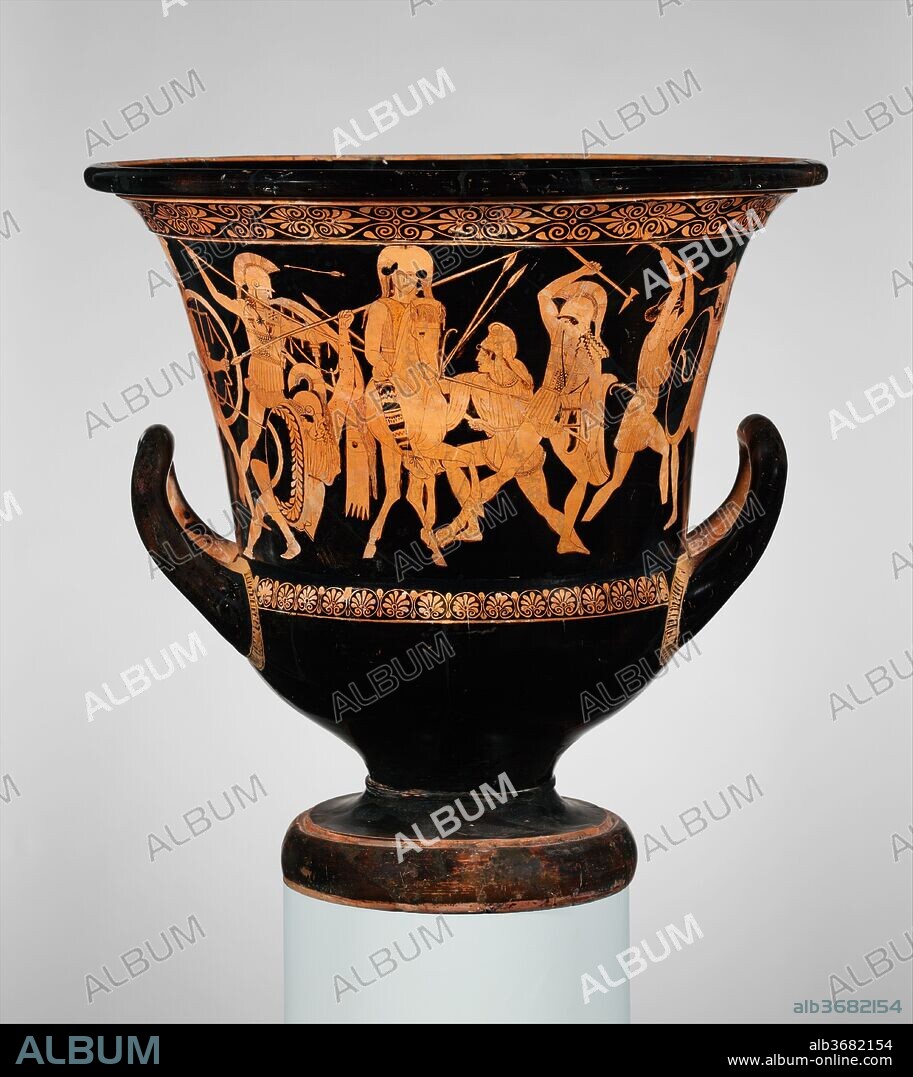alb3682154
Terracotta calyx-krater (bowl for mixing wine and water)

|
Añadir a otro lightbox |
|
Añadir a otro lightbox |



¿Ya tienes cuenta? Iniciar sesión
¿No tienes cuenta? Regístrate
Compra esta imagen.
Selecciona el uso:

Título:
Terracotta calyx-krater (bowl for mixing wine and water)
Descripción:
Ver traducción automática
Terracotta calyx-krater (bowl for mixing wine and water). Culture: Greek, Attic. Dimensions: H. 21 15/16 in. (55.8 cm)
diameter 22 15/16 in. (58.3 cm). Date: ca. 460-450 B.C..
Obverse and reverse, Amazonomachy (battle between Greeks and Amazons)
The number of figures and the complexity of poses here reflect an innovation that entered vase-painting about the middle of the fifth century B.C. and is generally attributed to the influence of monumental wall-painting. The frontal mounted Amazon in the middle of the composition, her falling comrade to the left, and the overlapping of figures, shields, and weapons dramatically convey the tumult of battle. At the same time, the many spatial planes strain the implicitly shallow stage provided by the black background of a vase. The fundamental incompatibility between naturalistic representation and the expressive possibilities offered by vase-painting led to the latter's demise--although that would come only at the end of the fourth century B.C. In the meantime, artists exploited every possibility to depict motion and emotion in the human figure.
Técnica/material:
Terracotta; red-figure
Periodo:
classical
Museo:
Metropolitan Museum of Art, New York, USA
Crédito:
Album / Metropolitan Museum of Art, NY
Autorizaciones:
Modelo: No - Propiedad: No
¿Preguntas relacionadas con los derechos?
¿Preguntas relacionadas con los derechos?
Tamaño imagen:
3572 x 4007 px | 40.9 MB
Tamaño impresión:
30.2 x 33.9 cm | 11.9 x 13.4 in (300 dpi)
Palabras clave:
 Pinterest
Pinterest Twitter
Twitter Facebook
Facebook Copiar enlace
Copiar enlace Email
Email
